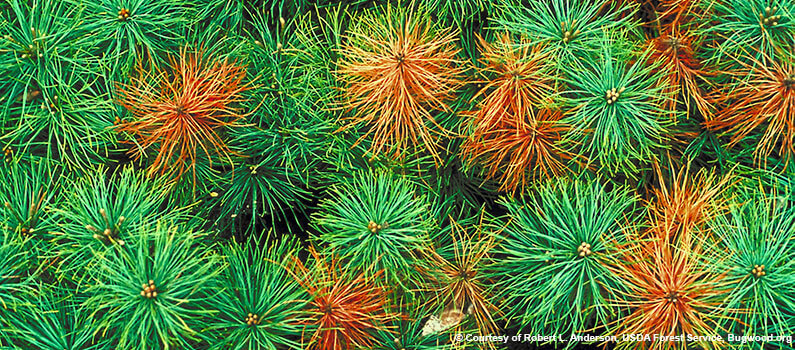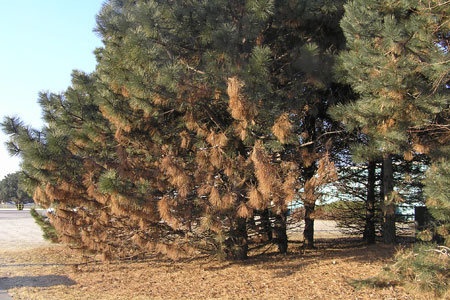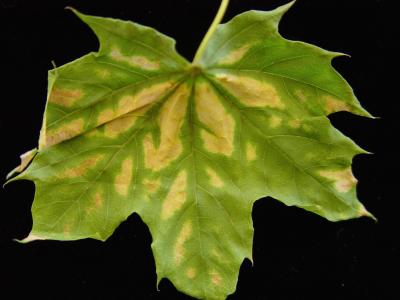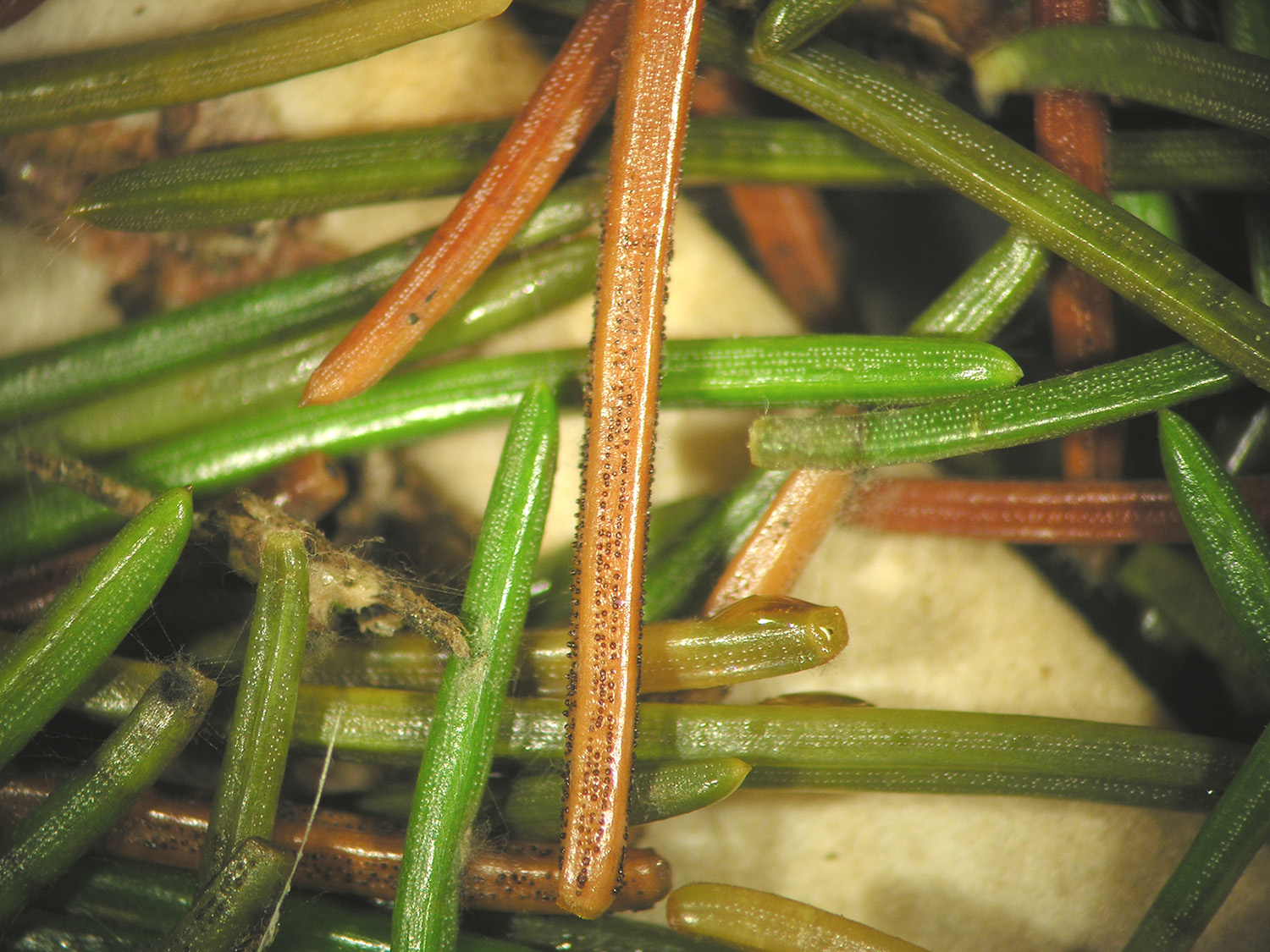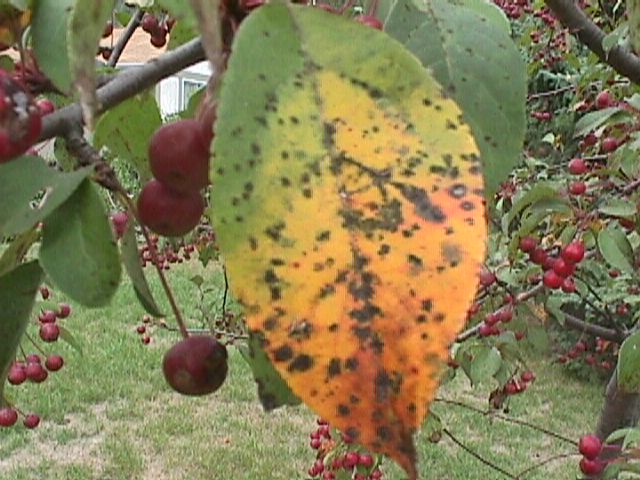Cedar Apple Rust
This disease affects the leaves of crabapples. It also infects junipers. The two of these plants in close proximity may yield a cedar apple rust.
On crabapples, the disease starts as rust colored spots on the leaves which may eventually infect the entire leaf, causing premature leaf drop.
On junipers, it will appear as a small, orange colored gelatinous growth.
This is seldom a serious disease, but it is possibly the most unsightly, especially on crabapple leaves.
Dogwood Anthracnose
Dogwood anthracnose attacks native flowering dogwoods. Kousa dogwoods (aka “oriental” or “Korean”) are less susceptible.
The disease first appears as small tan lesions on the leaves and flowers. These lesions will have purplish borders. With favorable weather conditions, the lesions may envelop the entire leaf and move down into the stems, where they’ll cause cankers.
Diplodia Tip Blight
Diplodia tip blight affects mostly pine, but is known to also infect spruce and fir.
What makes this so damaging is that it attacks the newest shoots on the tip of branches, causing them to wilt and die back.
Severe infestations can affect all parts of the tree and could lead to eventual death.
Verticilium Wilt
Verticilium wilt is a soil-borne disease that enters the tree through the roots. It affects primarily maple trees, but may also affect viburnums, tulip tree, ash, elm and smoketree.
Symptoms include a scorched appearance to leaves and dying out of sections of an otherwise healthy tree.
Rhizosphaera Needle Cast
Rhizosphaera needle cast is a disease affecting spruce, some fir species, pine, and some cedars.
Symptoms often appear the next season after the initial infection. It often begins in the lower canopy of the tree where air circulation is slower and this results in moisture staying on the needles for a longer period of time.
A closer look at infested needles will reveal black spots along the needles.
Fire Blight
Ooze
Canker
Fire blight is a serious bacterial disease of crabapples, hawthorn, mountain ash, and pear.
Symptoms appear as infected twigs, leaves, and flowers turn dark brown to black. The dead twigs will look as if they were burnt by fire (hence the name) and may curl into a “shepherd's crook.”
A close look at the bark may reveal “bacterial ooze” which is a sign of the disease having spread throughout the tree.
This usually occurs in the wet months of the year.
Apple Scab
Apple Scab affects the leaves, flowers, fruit, and twigs of crabapples, mountain ash, firethorn, and pear.
The disease starts as water soaked spots on the leaves that turn olive colored, then brown and take on a velvety appearance. Severely infested trees will have spots on the twigs, flowers, and fruit.
It’s not uncommon for severely infested trees to become completely defoliated by mid-late August.
The disease survives from year to year in the fallen leaves and twigs. It’s best to remove leaf litter completely from beneath trees that have a history of infestation.
For more information regarding diseases that may be affecting your trees & shrubs health, please do not hesitate to give us a call, or shoot us an email.






